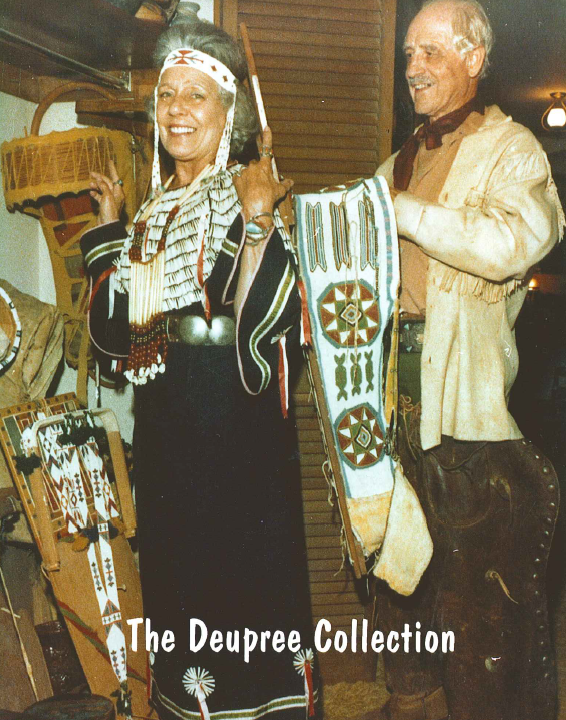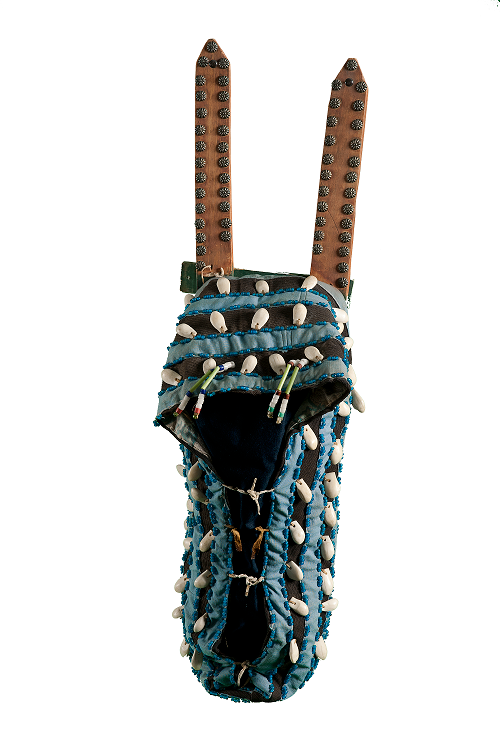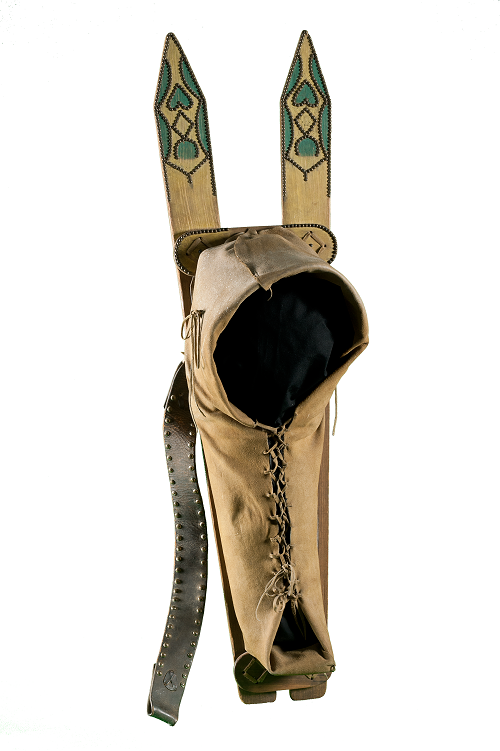Deupree Cradleboard Collection
Cradleboards were made by many Tribes throughout the United States, and are still used in some locations. Though most Native families now use strollers and the other accessories of U.S. modern culture, some have chosen to continue use of these traditional baby carriers.
The basic design of a cradleboard is a flat, hard back made of wood, with woven or cloth sides that enveloped the baby, and could be fastened or laced to safely secure her or him. Most have a footrest, as well as head protection. The materials used to construct the cradleboard and its pieces vary widely according to the tribe and its geographic location.
Cradleboards had, and sometimes still have, a very important use in Tribal cultures—keep babies safe and to help parents care for them while the parents go about their daily work. Babies were usually carried in cradleboards during their first year, and sometimes longer. Part of the time the mother carried the cradleboard on her back, much like a baby backpack. Since the cradleboards were strong and solid, parents could also lean the baby and cradleboard against a tree, or hang them from a tree limb or saddle, safe above the ground. Sometimes the baby was completely laced up to the chin, and other times the fastening was loosened so that the baby had his or her arms free and could play with little toys that were fastened to the cradleboard.
Like many traditional crafts, individuals decorated these functional pieces in distinctive ways. So in addition to their obvious uses in child care, cradleboards also were used to showcase the maker’s talent, to express tribal and cultural identity, and to show the receivers’ status in the community. Cradleboards range from fairly simple wood planks with ties, to buckskin or other textile decorated with elaborate beading or quilling.

A gift from Dr. Harry Deupree and family in loving memory and tribute to his wife, Dorothy Swan, the Deupree cradleboard collection bears witness to the diversity of cultural expression that is evident in this common artifact. It is a lasting tribute to the artistry displayed throughout North America’s Native population.
From the Oklahoma Historical Society Audio Archives


